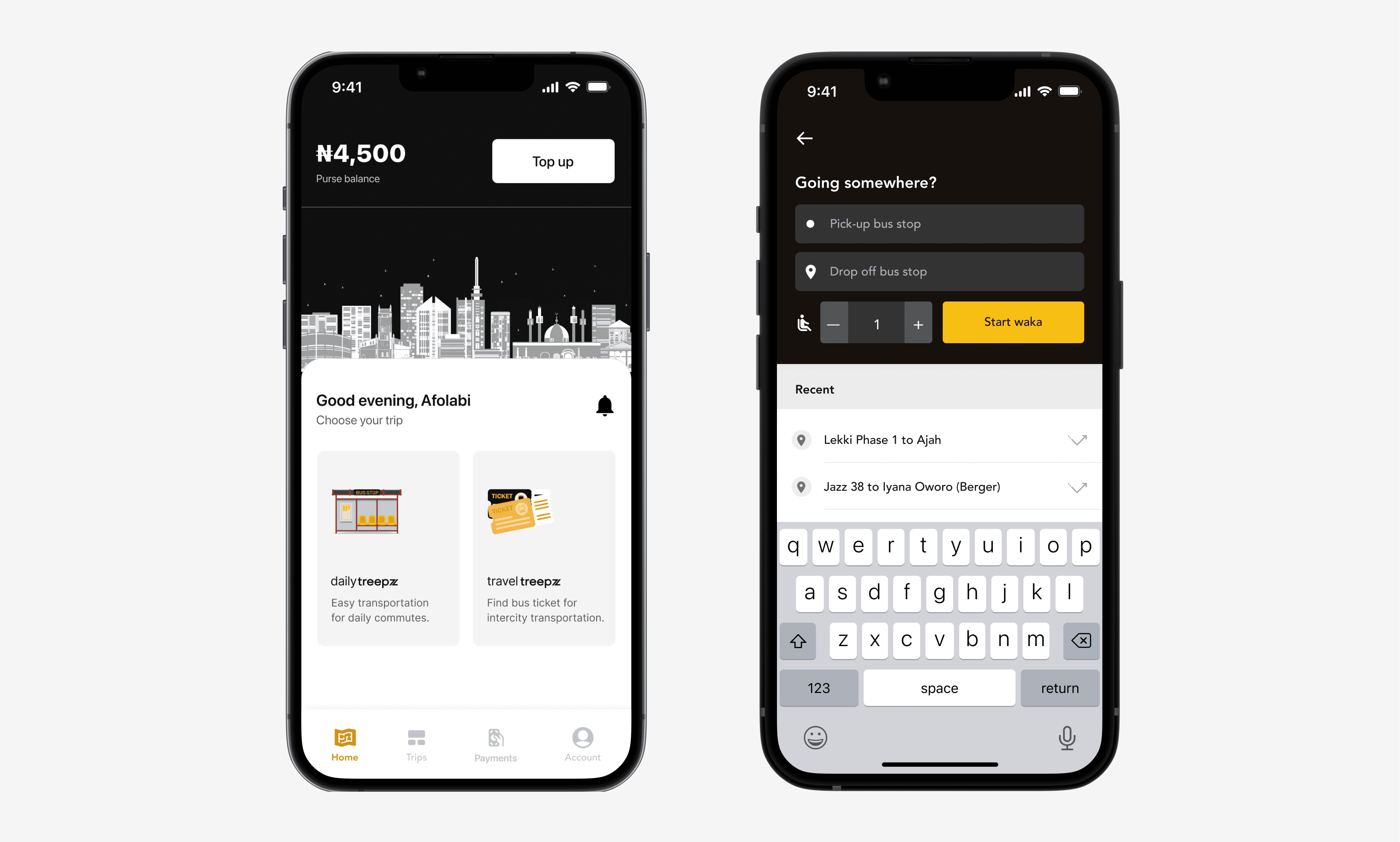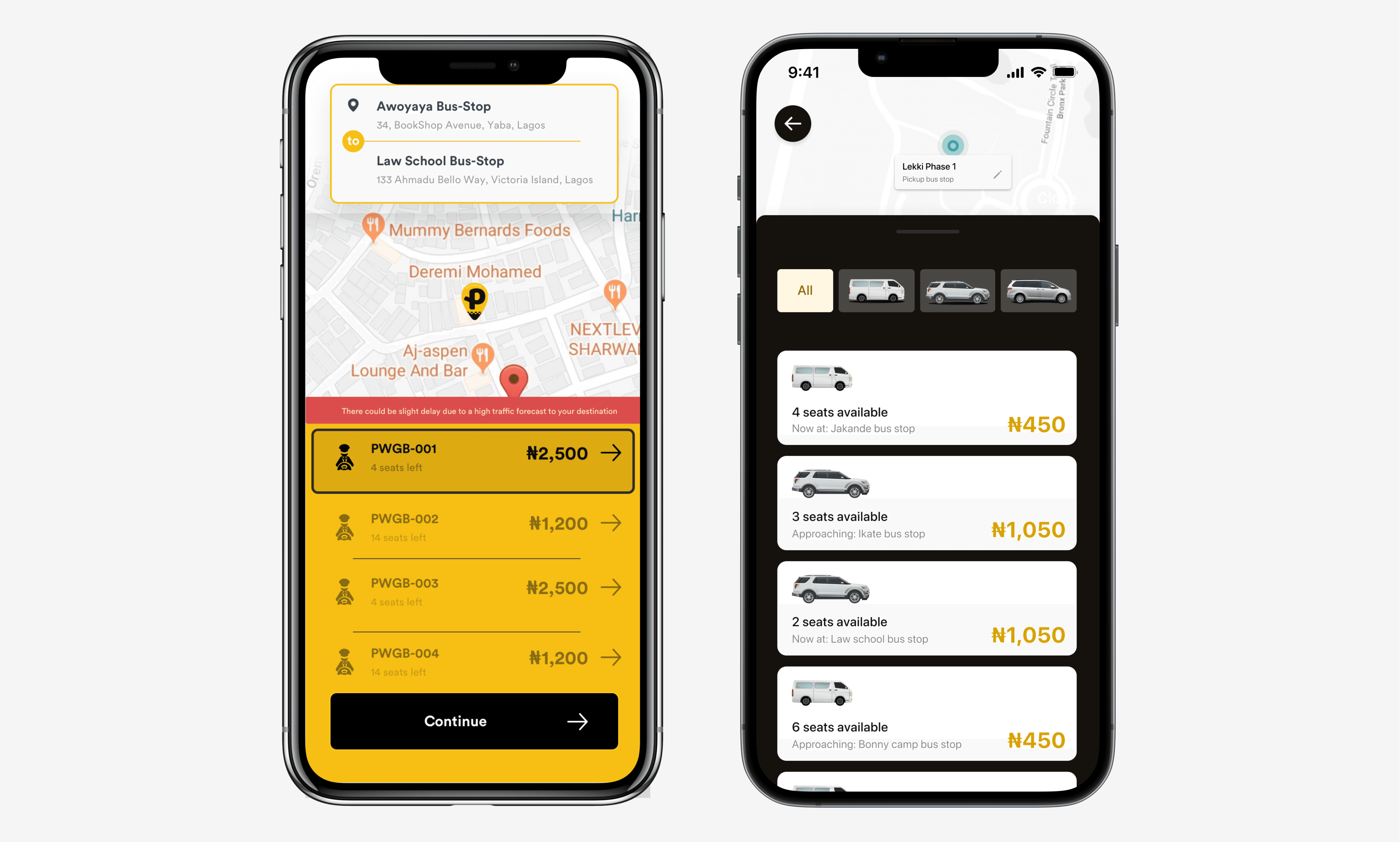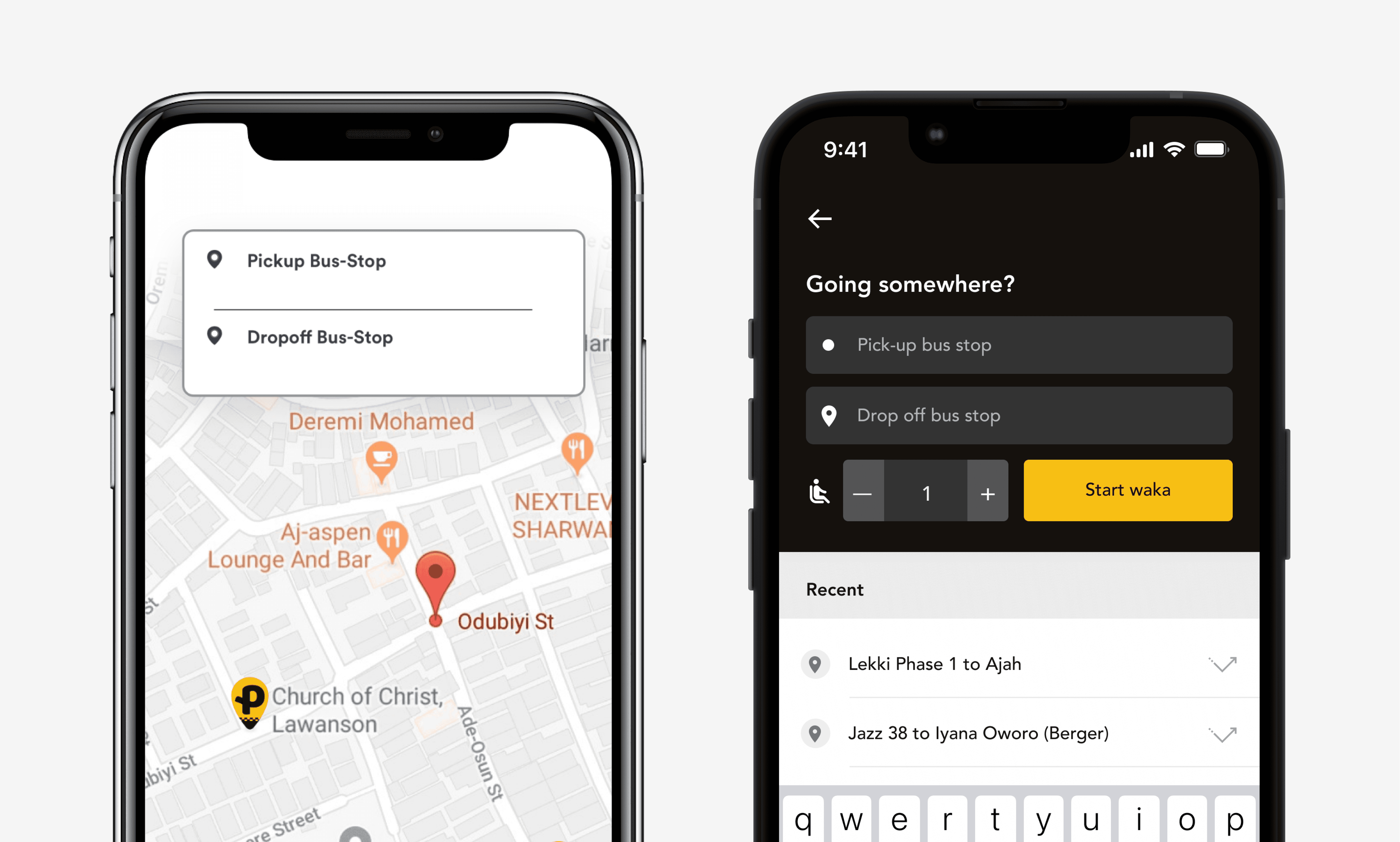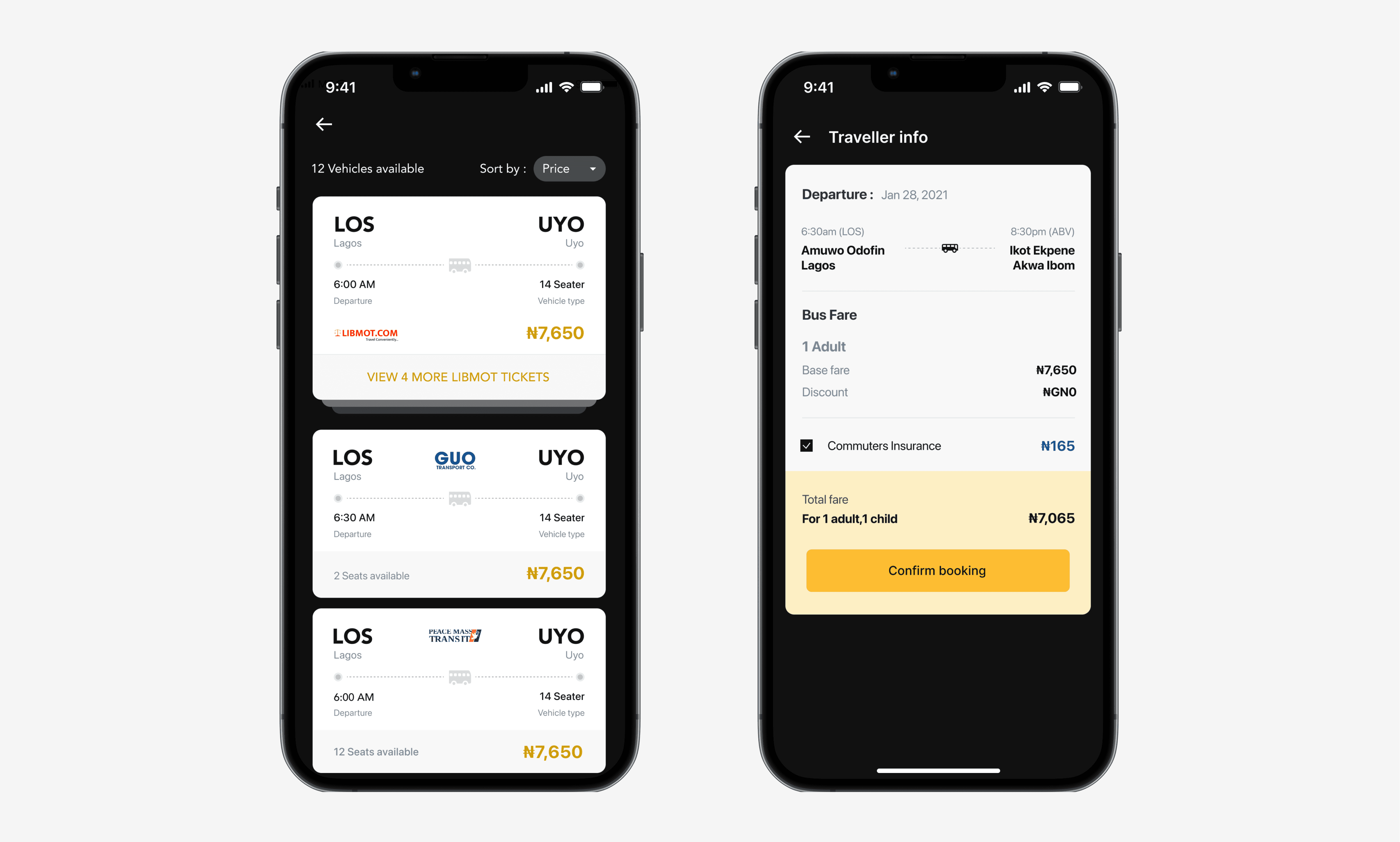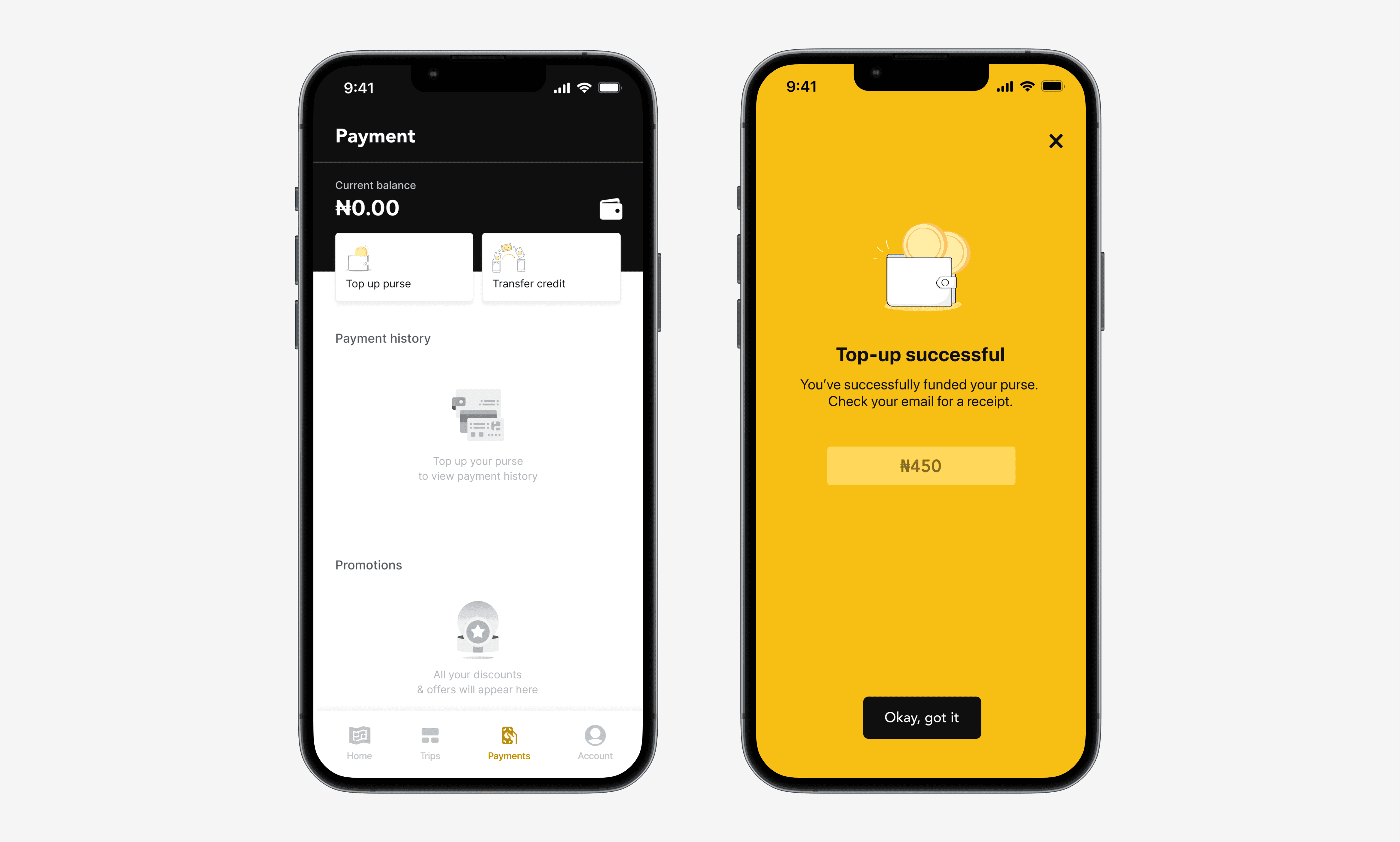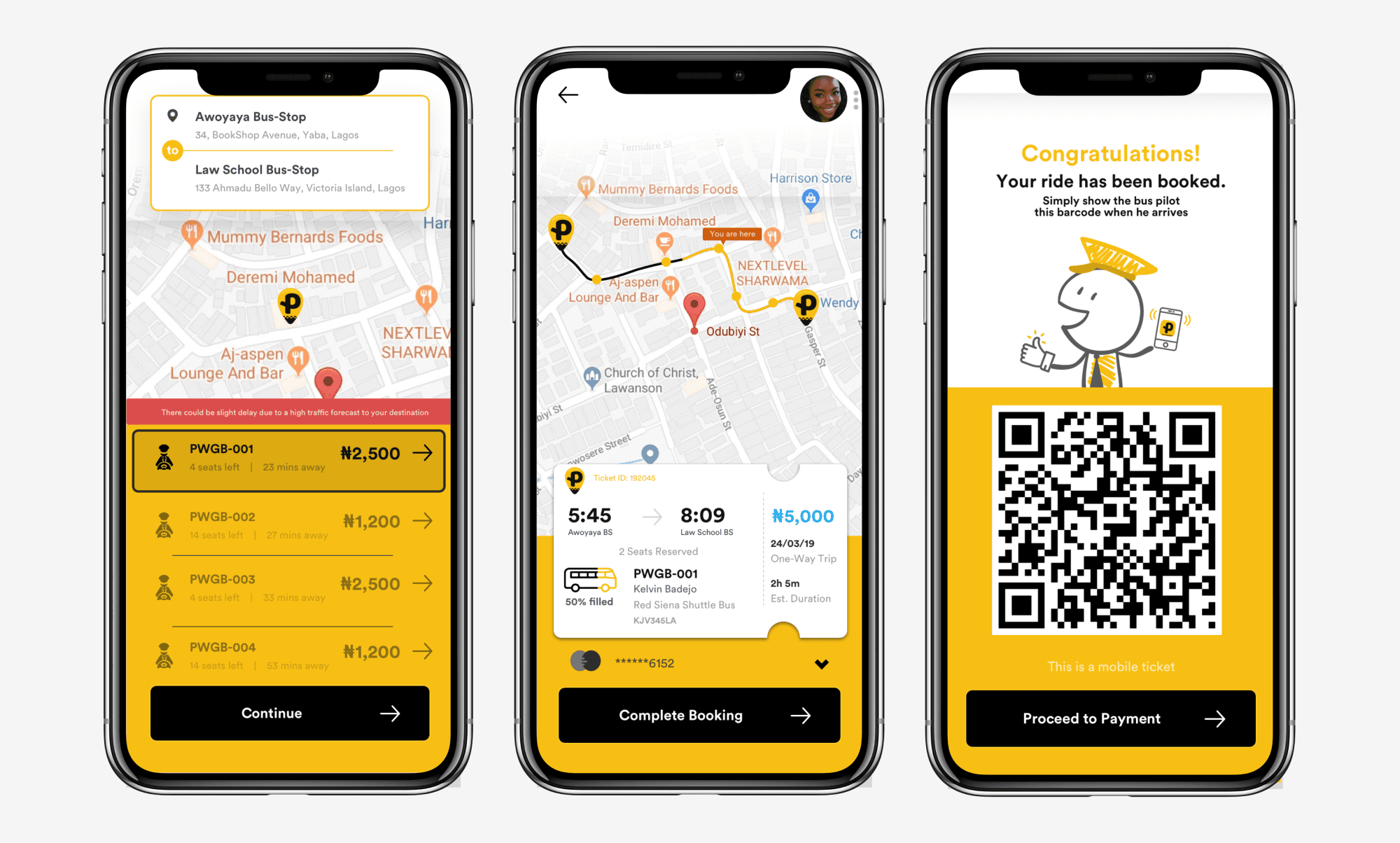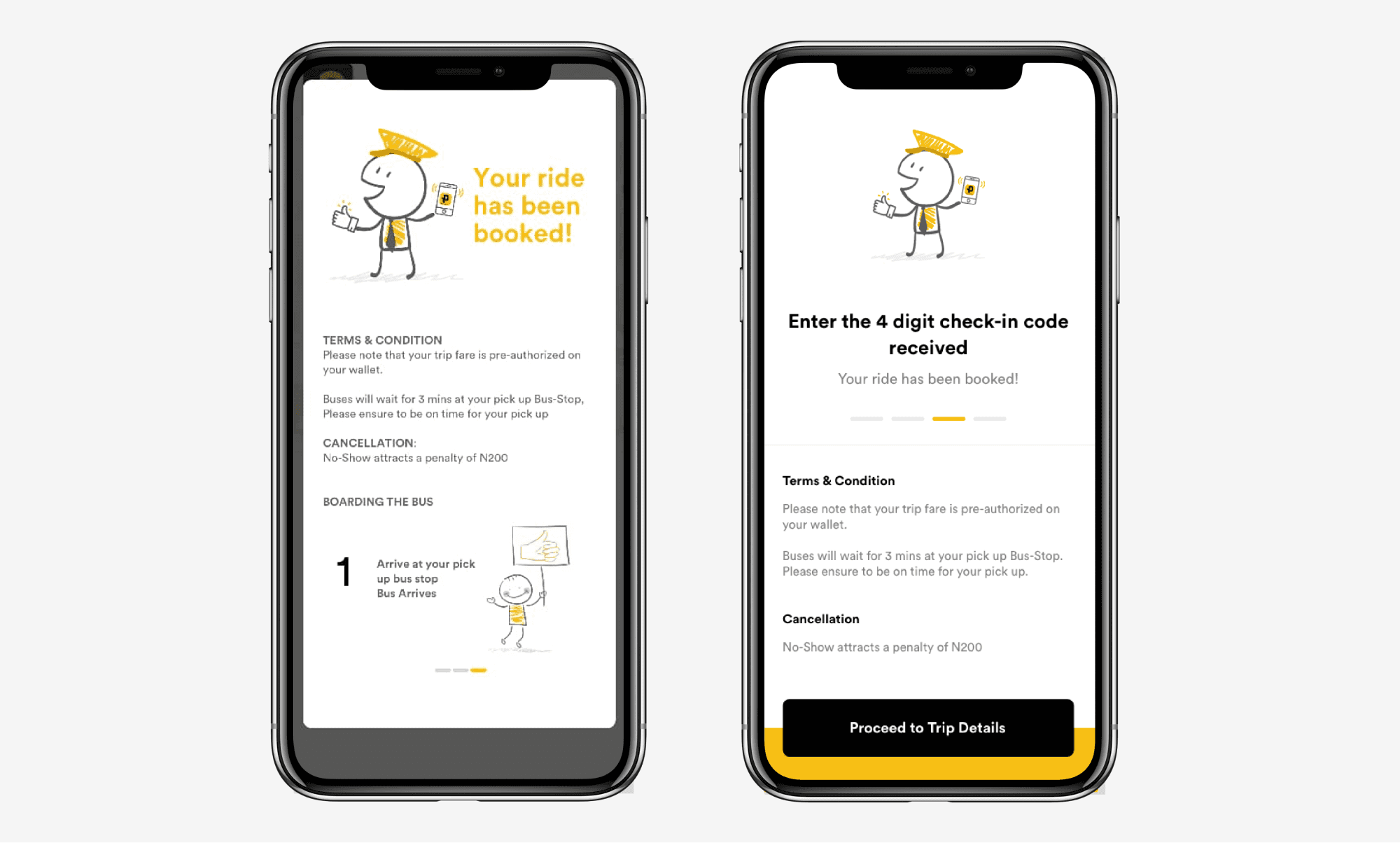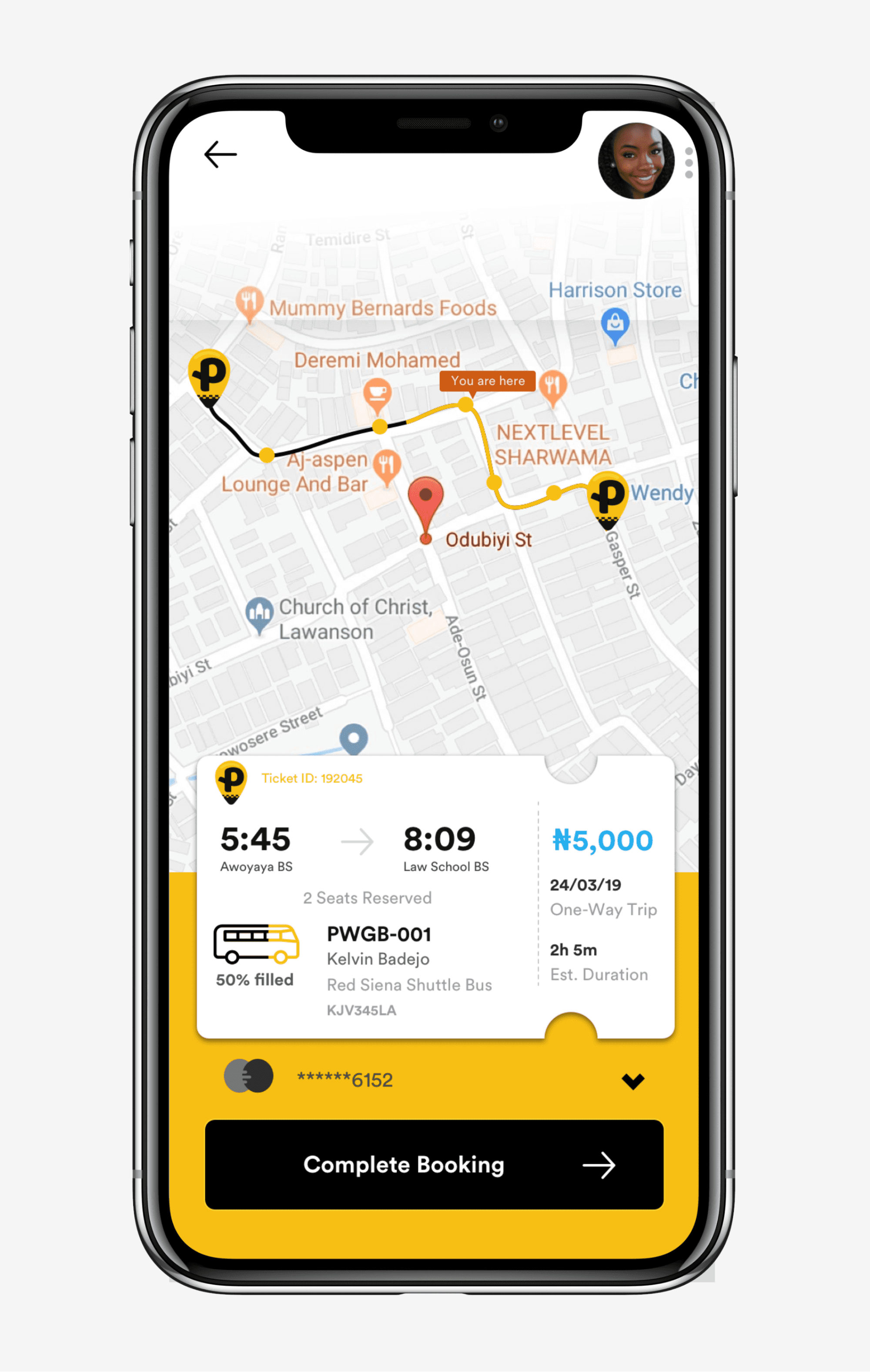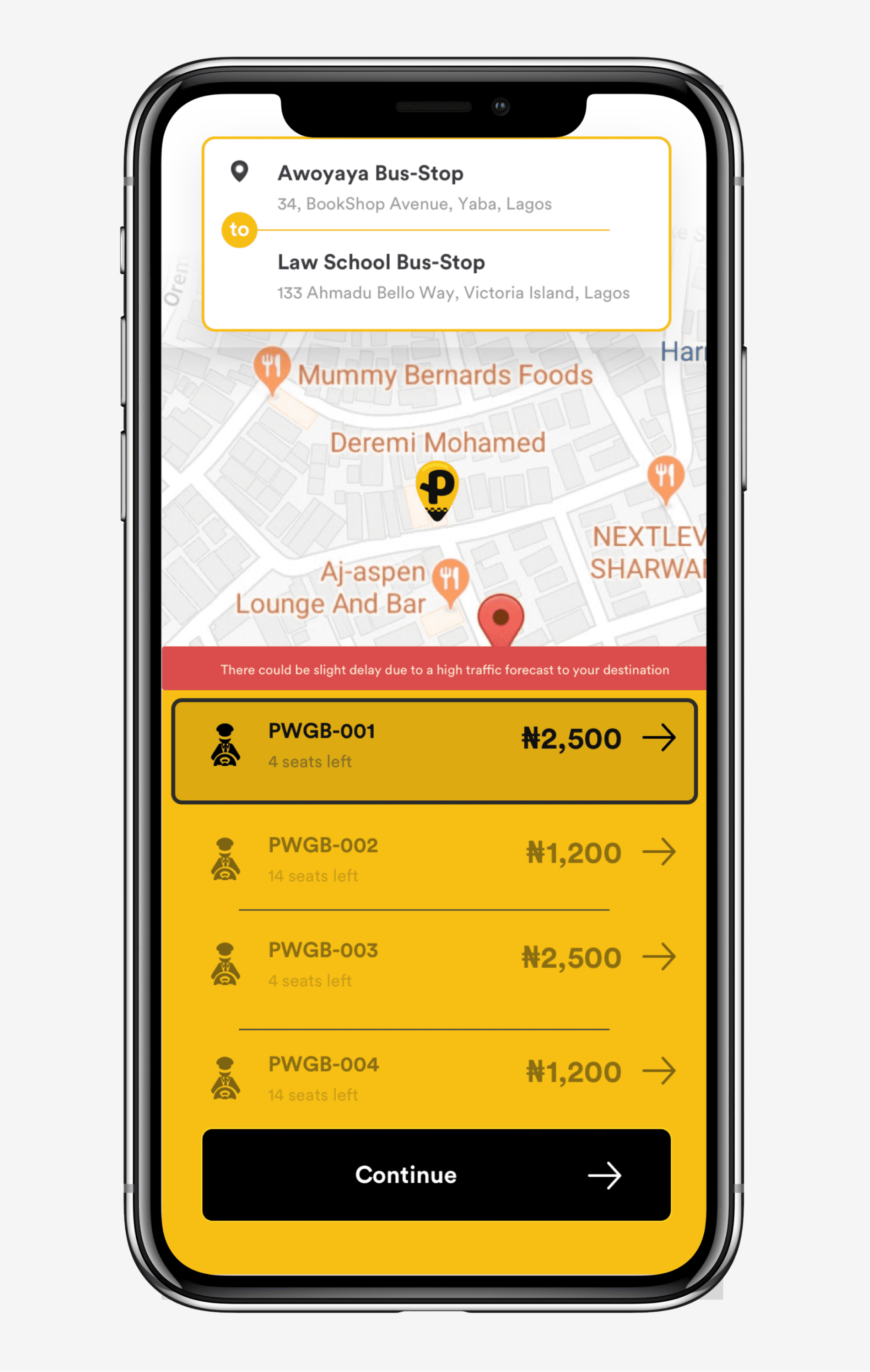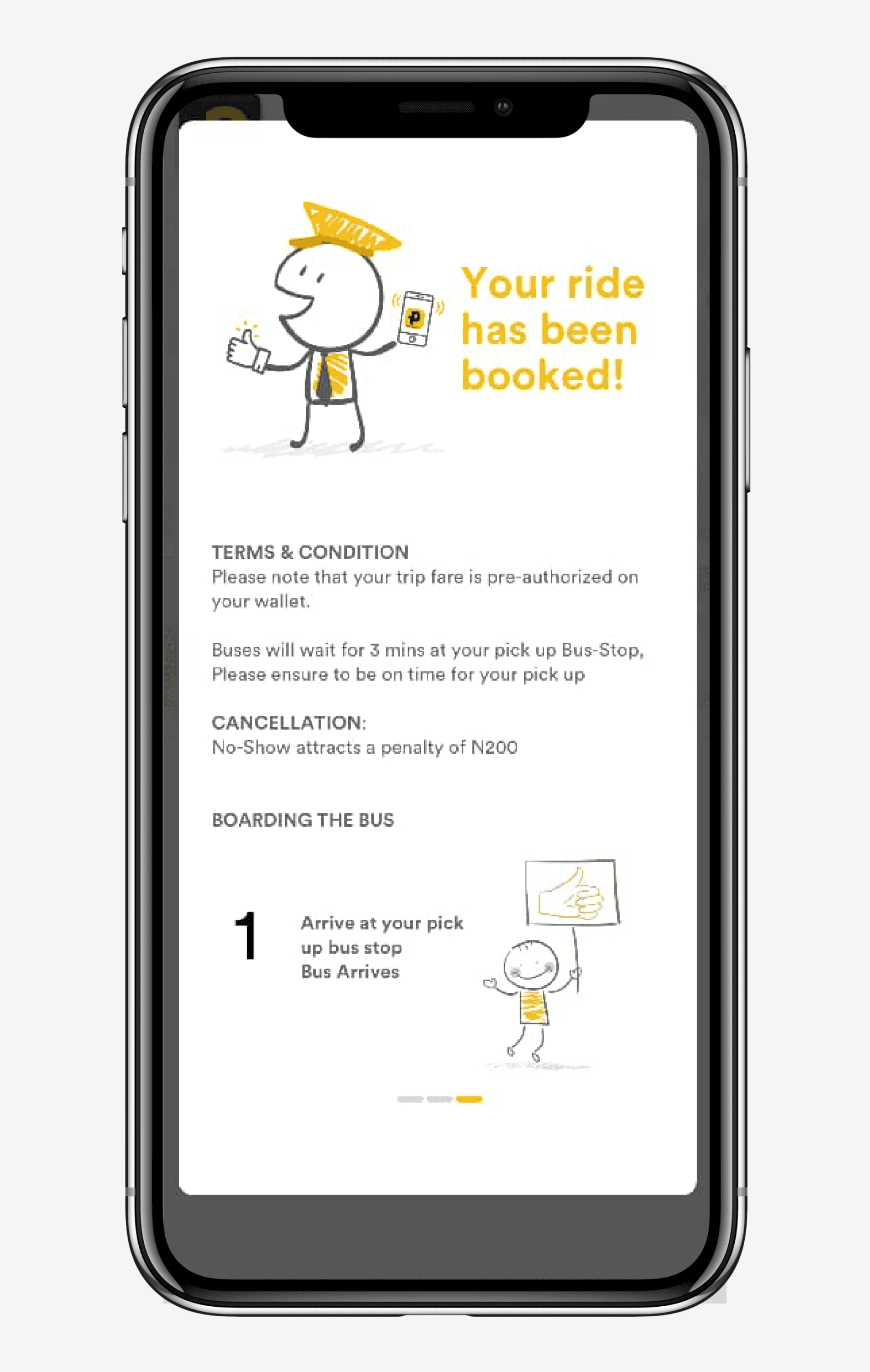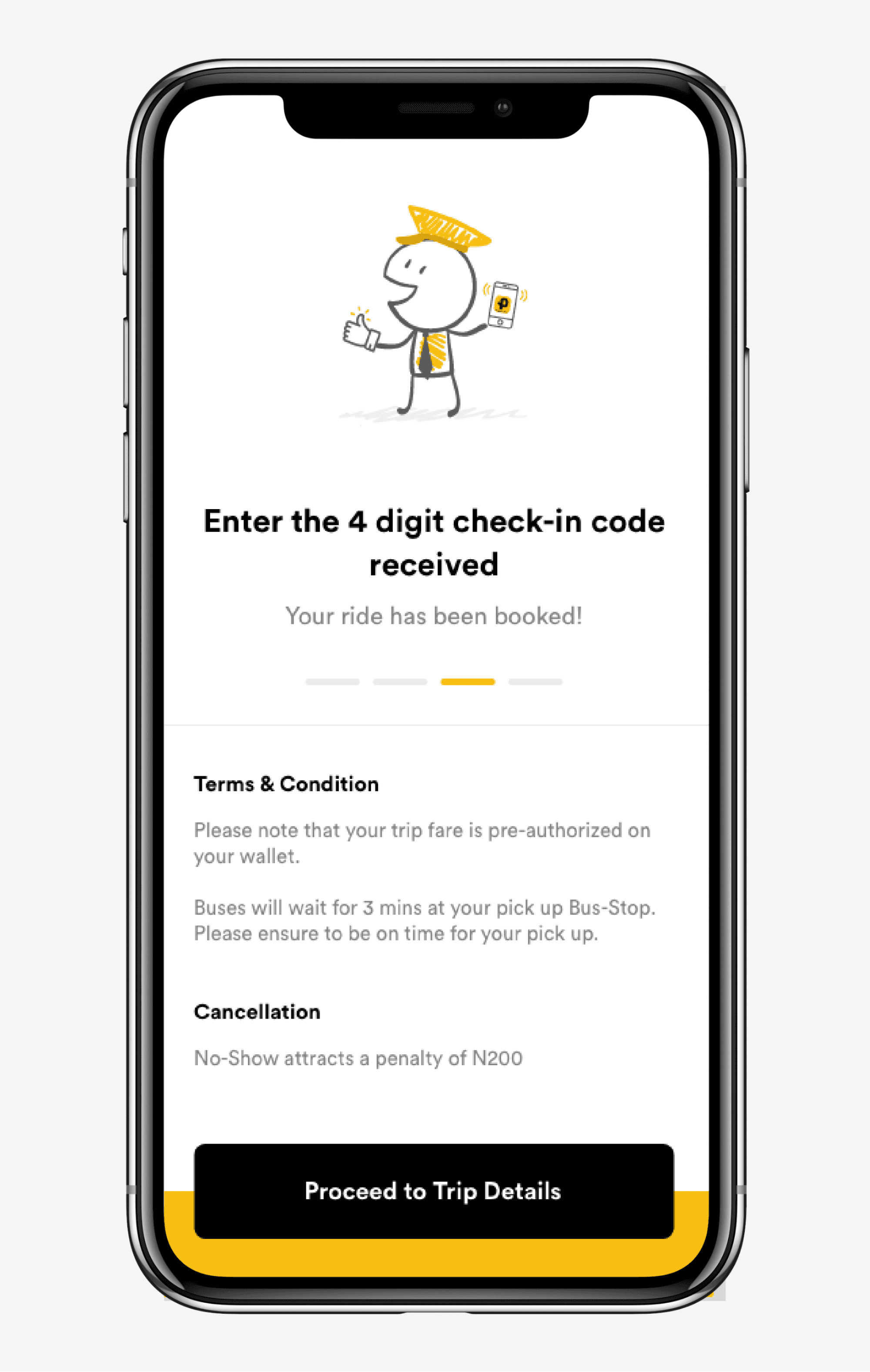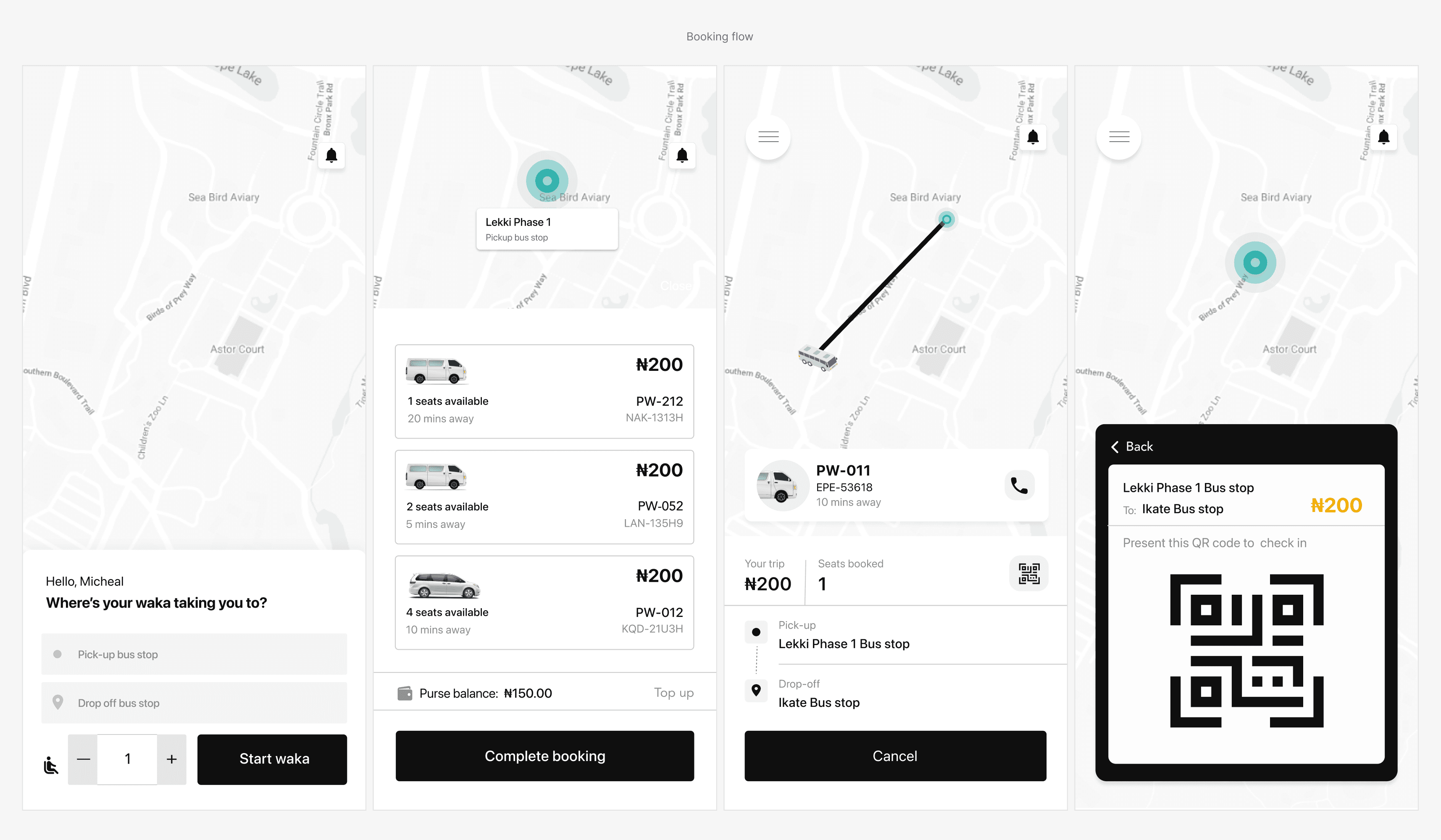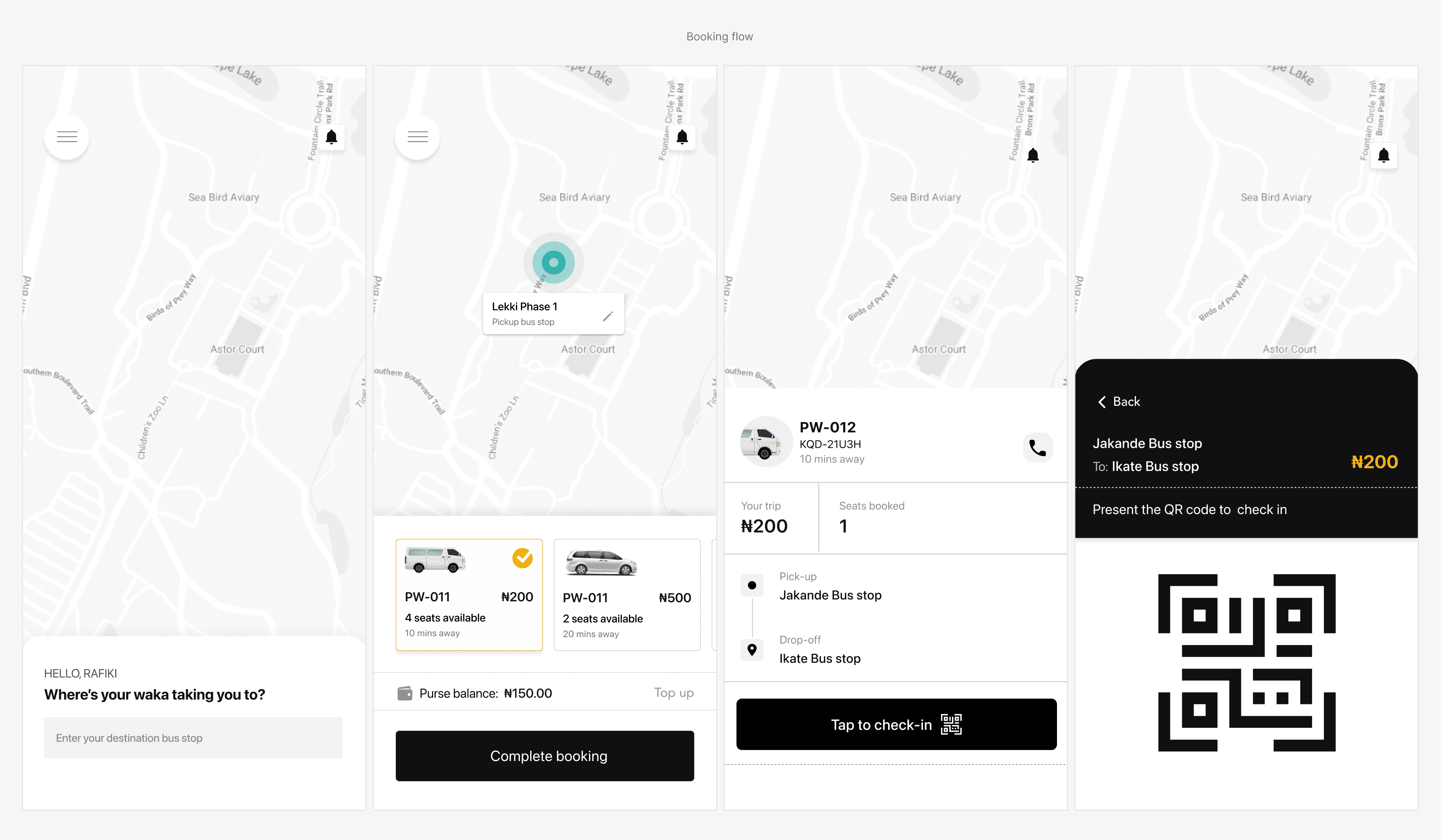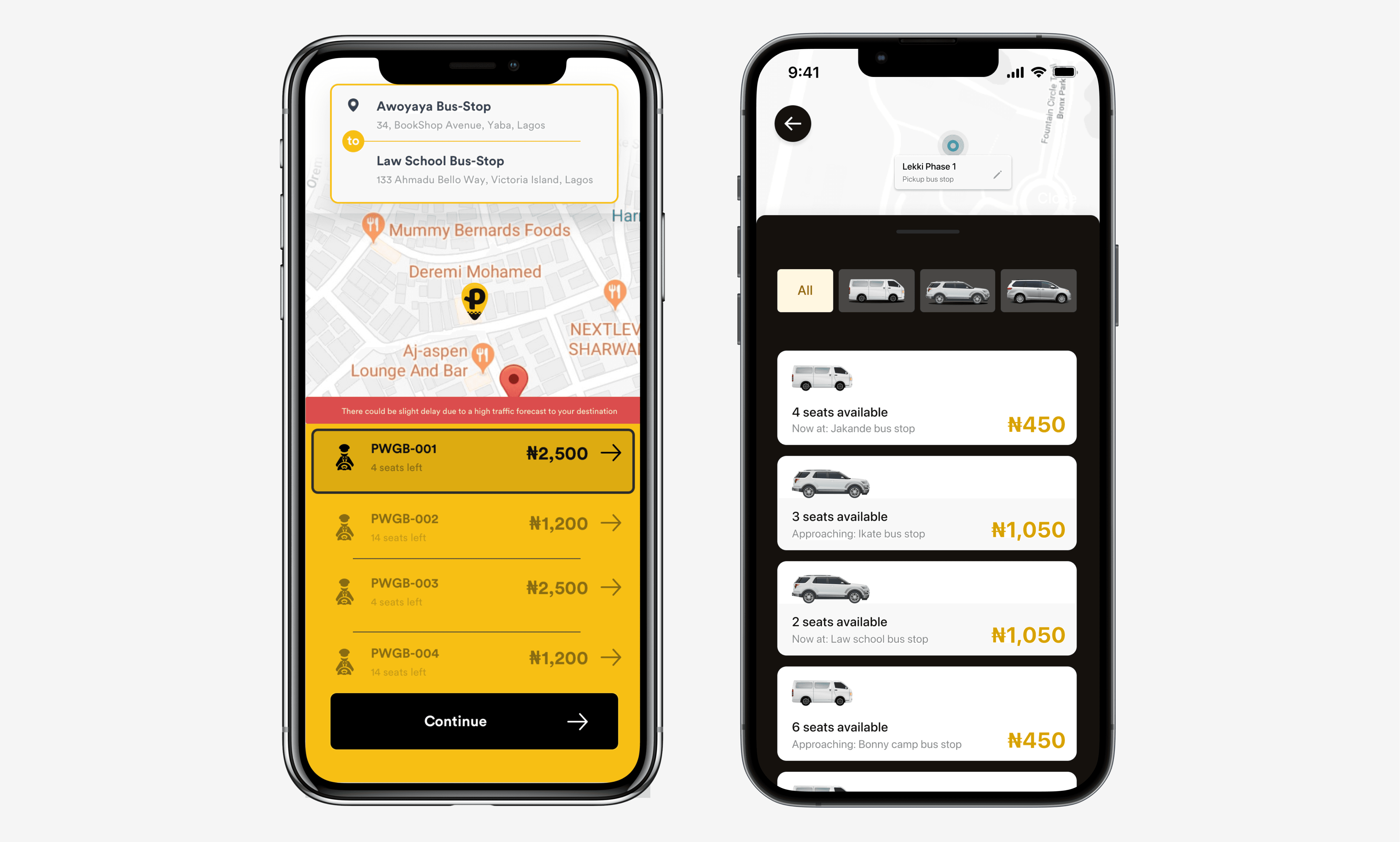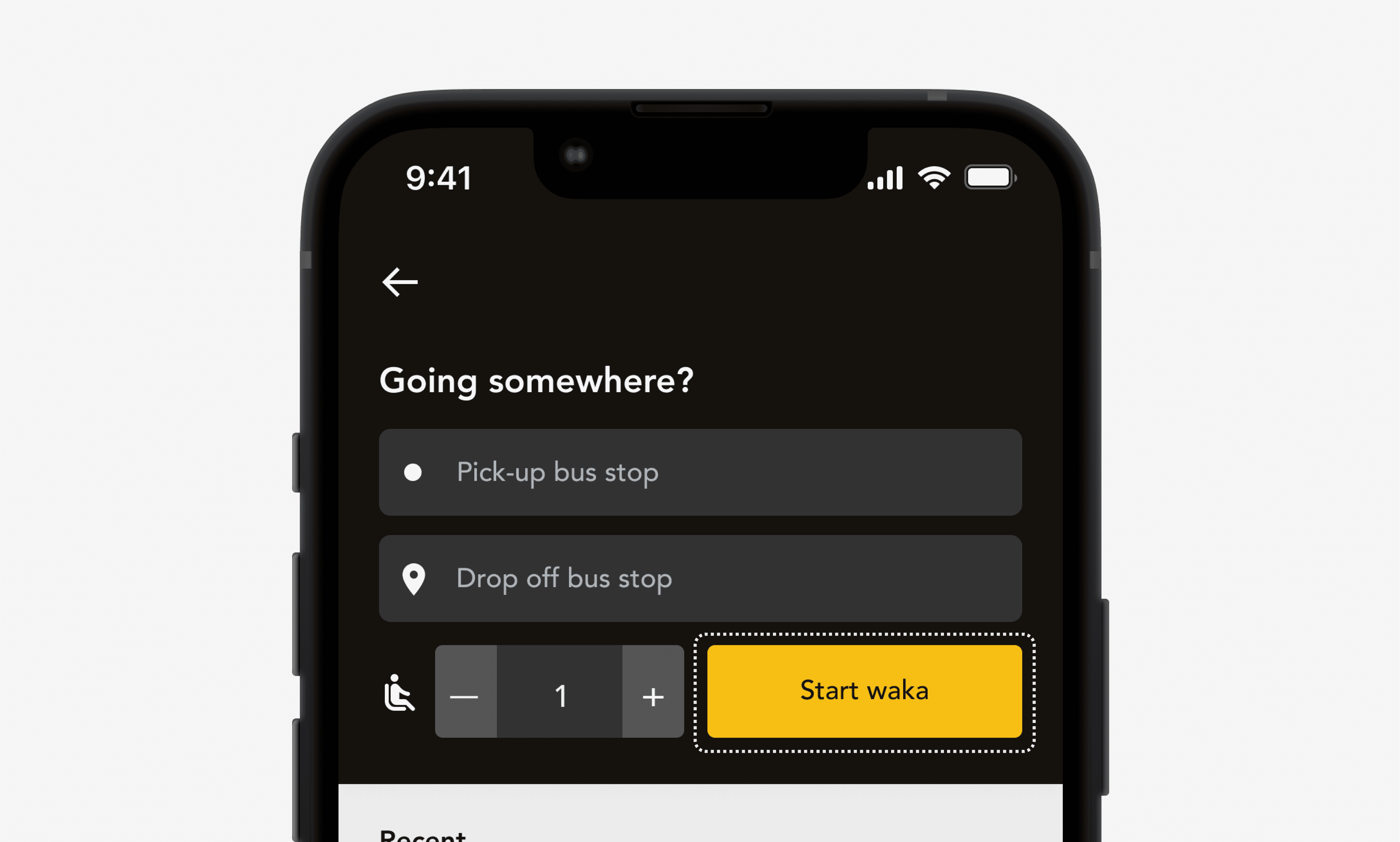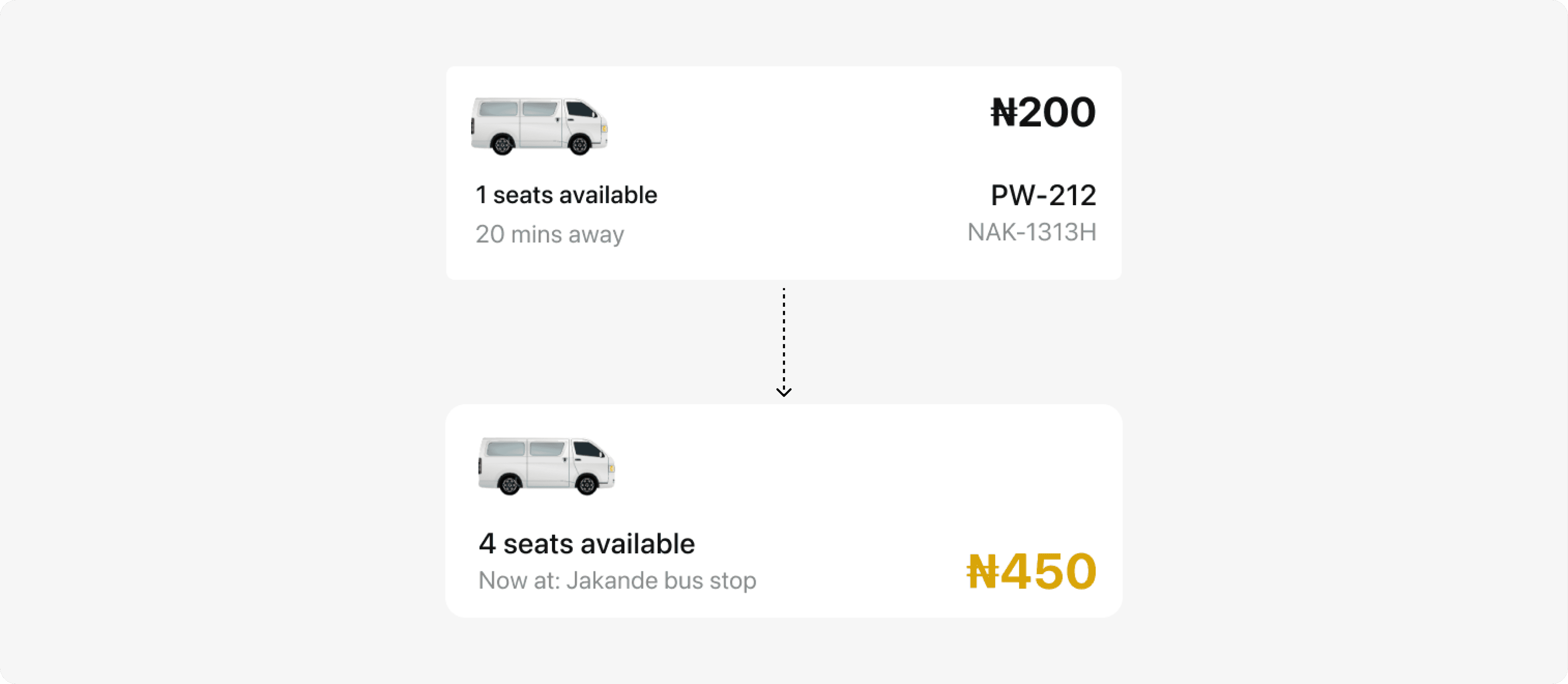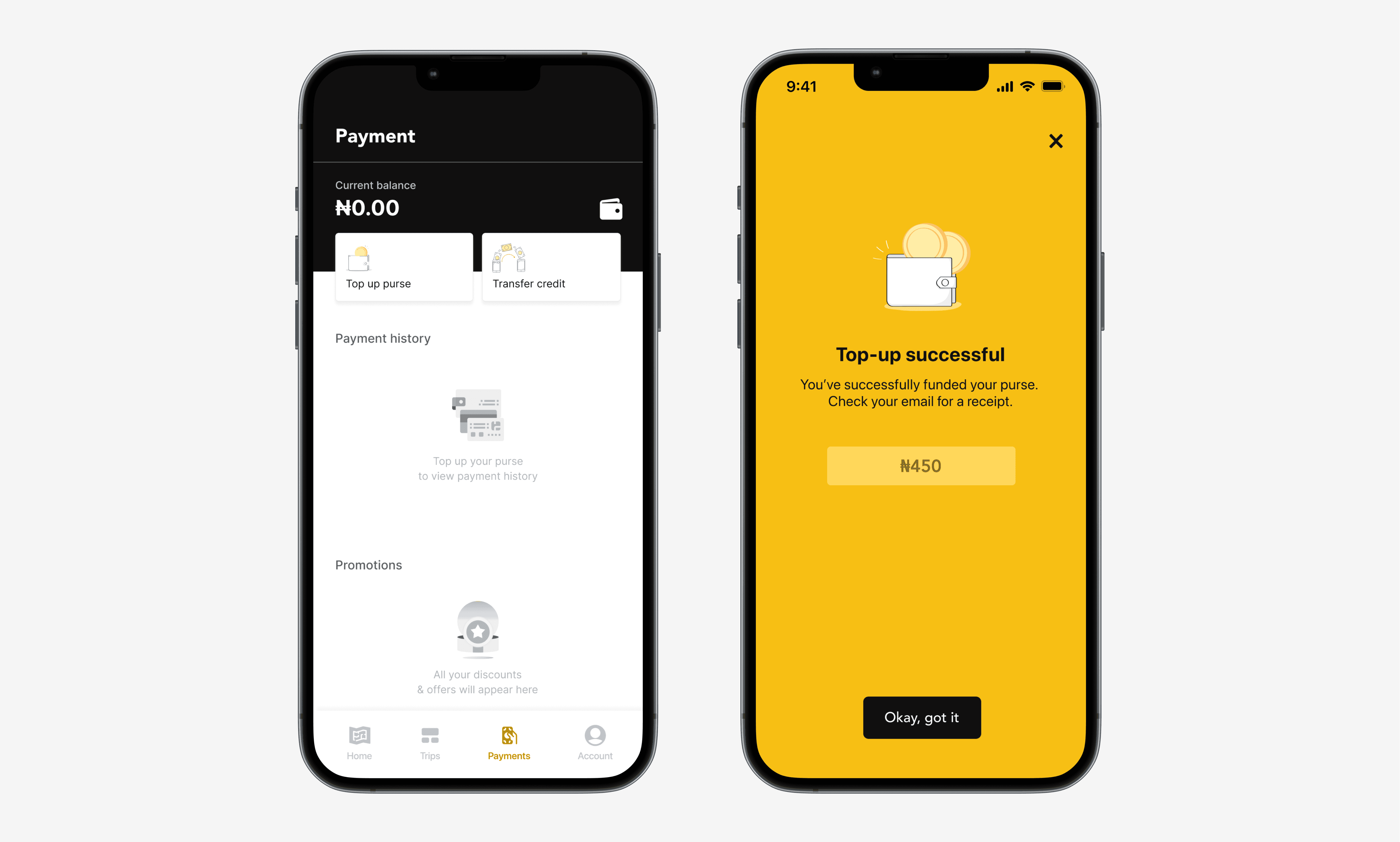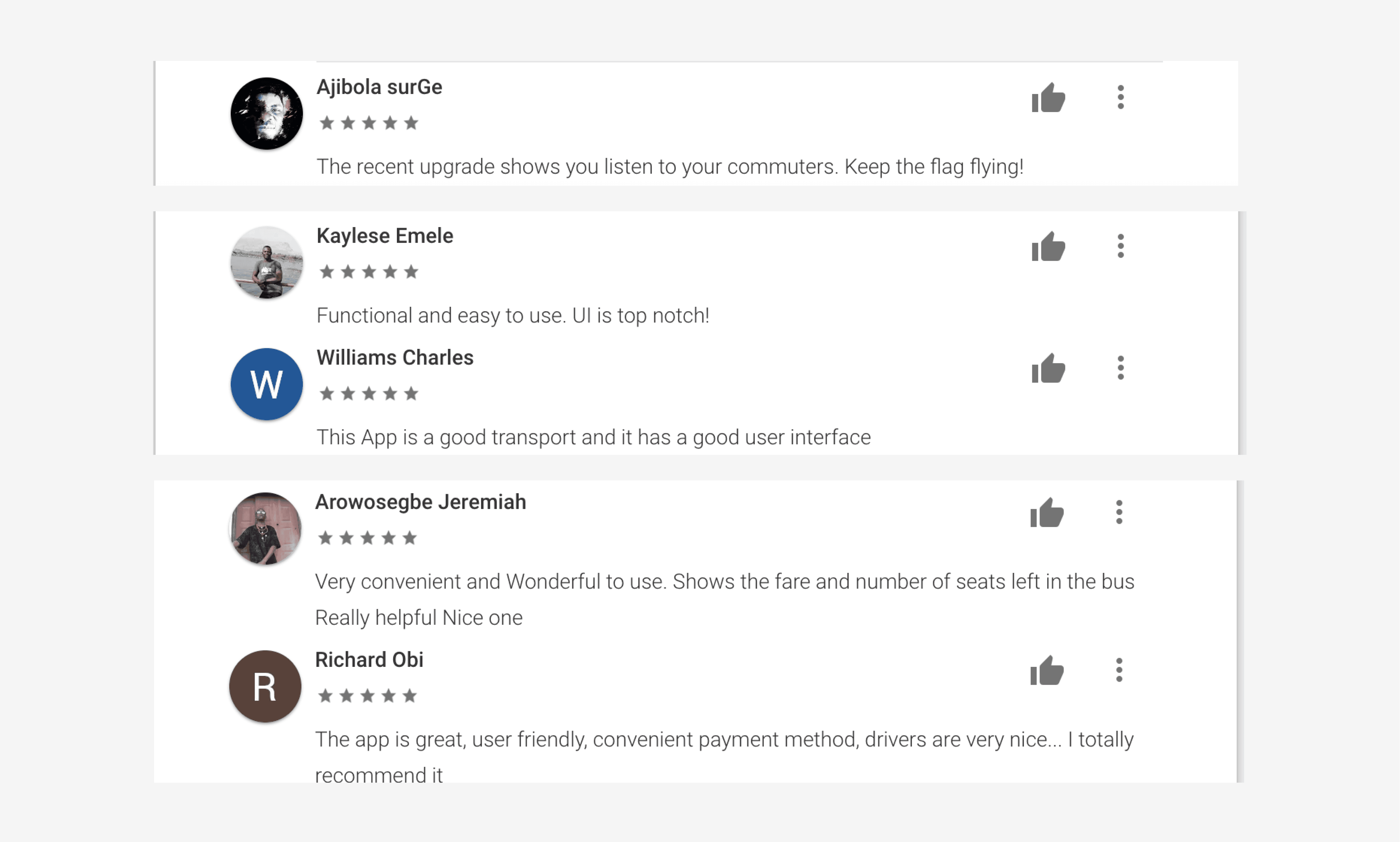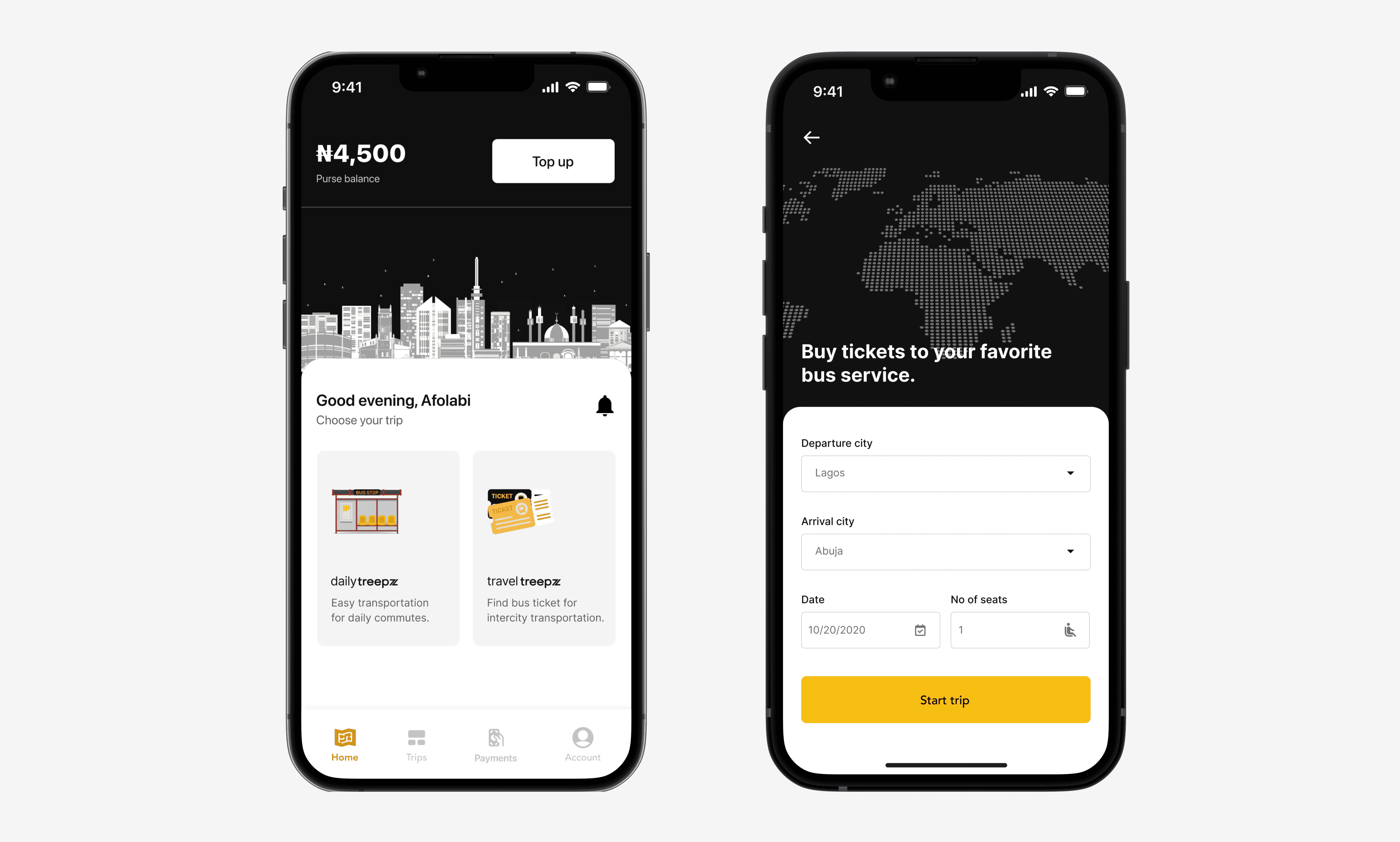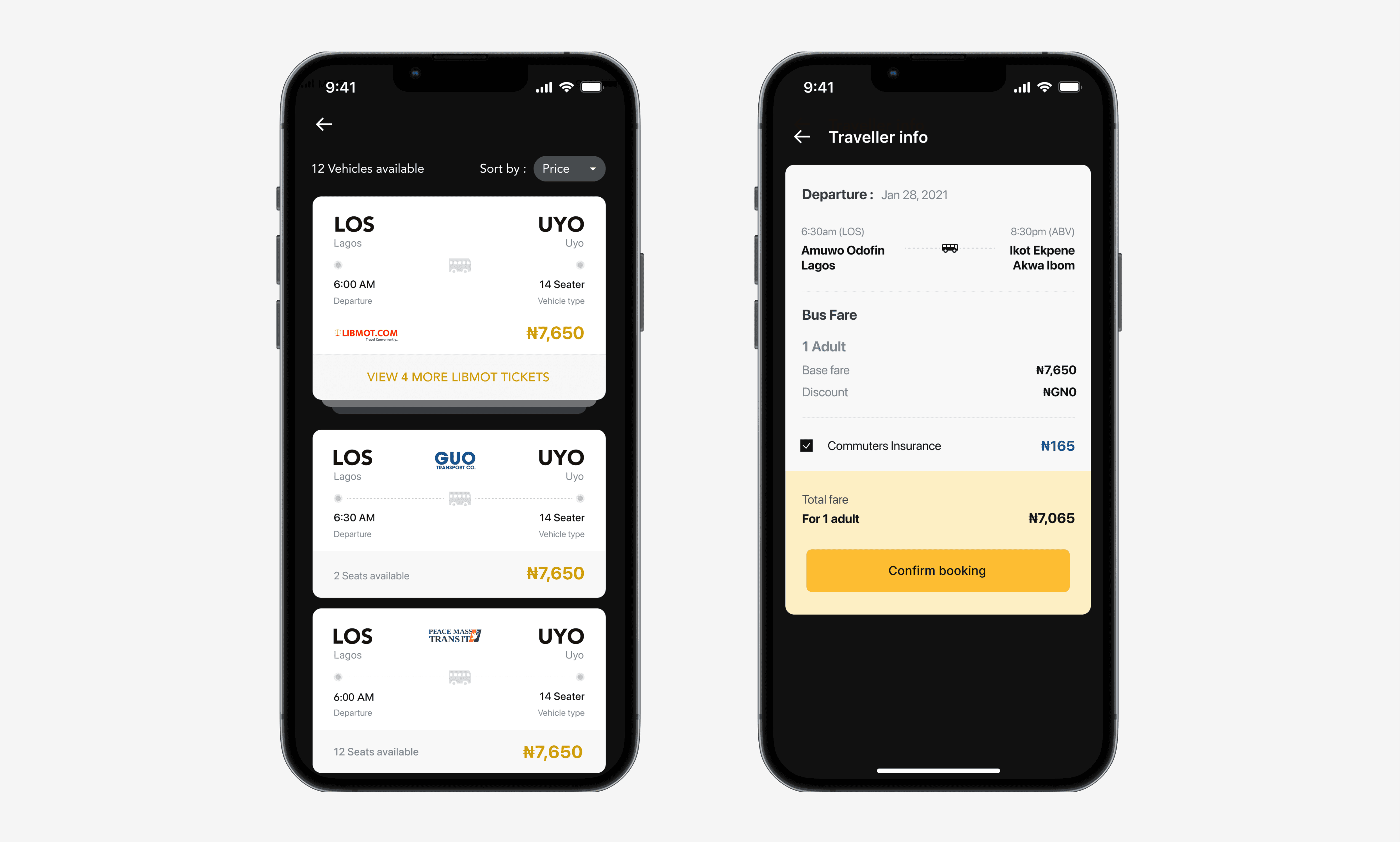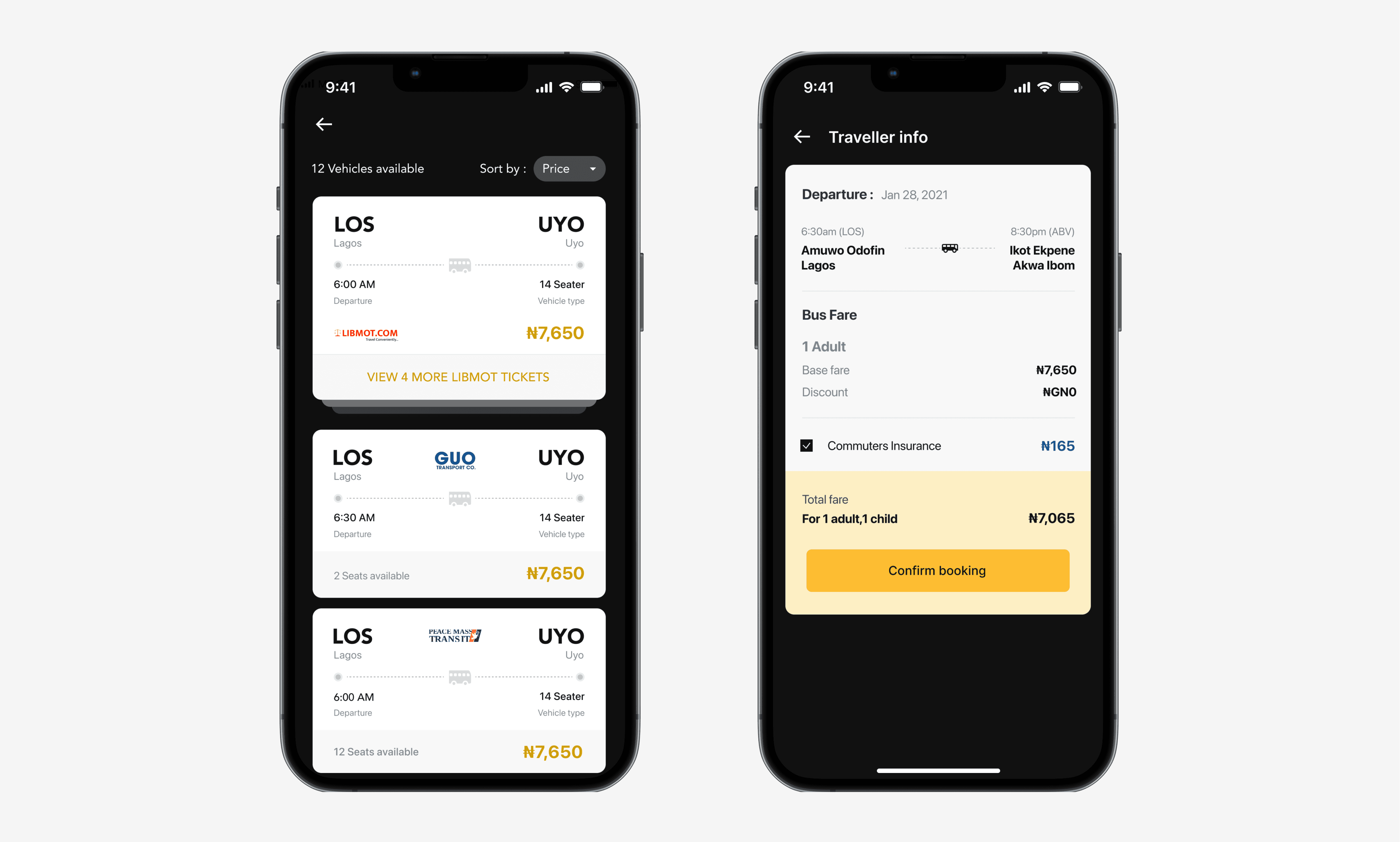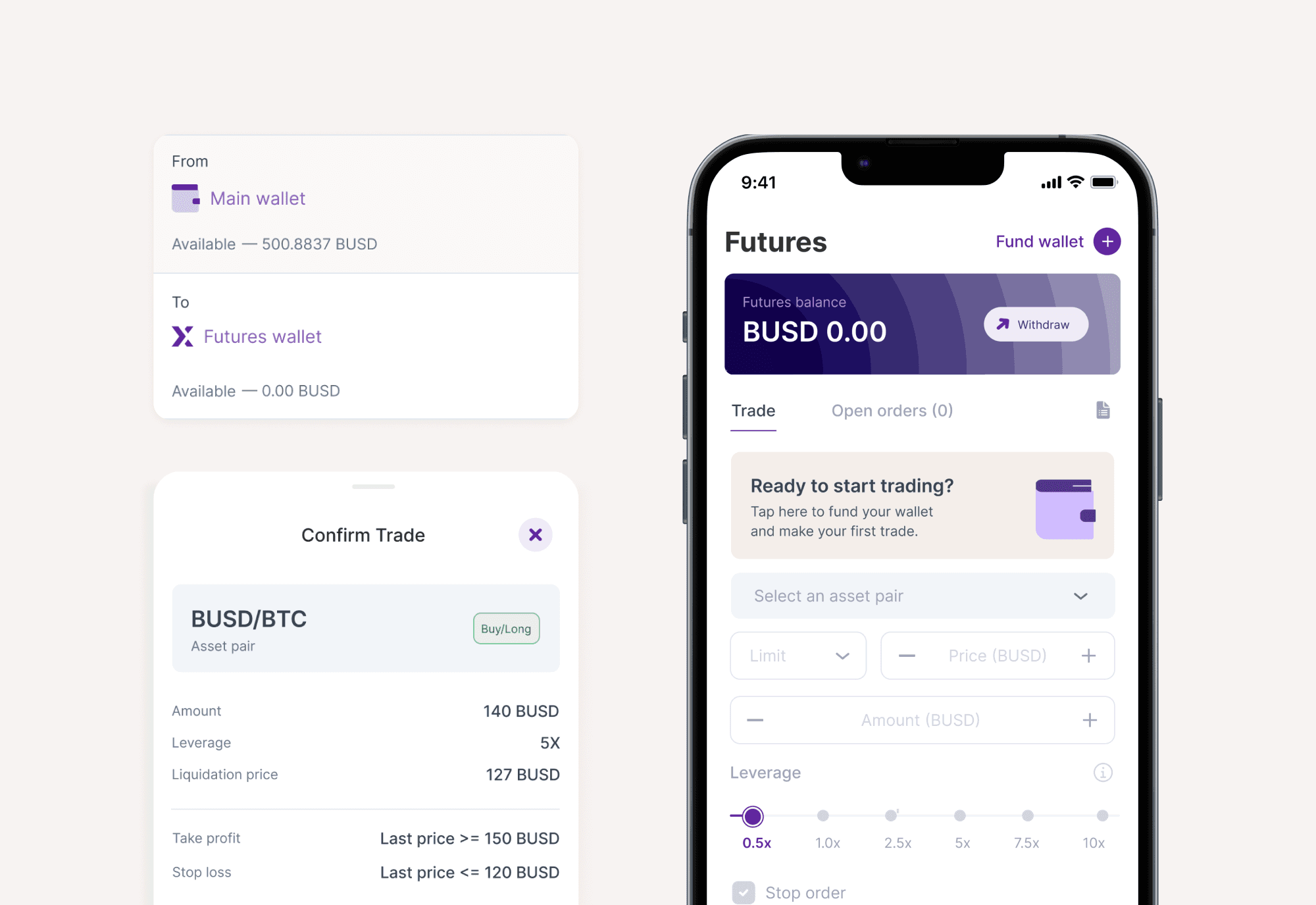Treepz
Overview
Imagine rushing to book a ride to work, only to face a cluttered app, confusing navigation, and the fear of last-minute cancellations. This was the daily reality for Treepz users in 2020.
Treepz launched to revolutionize public transportation in Africa, but user feedback revealed a critical flaw: a booking process so frustrating that cancellations soared and trust plummeted.
As the lead designer, I faced a dual challenge, untangle the chaos of the existing interface and rebuild confidence in a platform meant to simplify commuting.
Role
As the sole designer, I led end-to-end UX/UI redesign efforts, collaborating with founders and engineers to:
Simplify the booking flow.
Improve app reliability and usability.
Align the design with Treepz’s brand identity.
Normal commuter journey
Existing app audit
The existing version of the app had several functional elements but lacked cohesion and an intuitive design. Usability suffered due to a cluttered interface, user struggled with booking rides efficiently and the app’s reliability declined.
Ideation
After mapping user flows and pinpointing pain points, I moved into low-fidelity wireframes to explore design solutions.
Outcome
Simplified booking flow
Problem: Users struggled with a cluttered interface and unclear navigation, leading to frustration and cancellations.
Solution:
Redesigned the search section to allow easy seat selection and cleaner UI.
Added vehicle images to help users make informed decisions.
Impact:12% reduction in cancellations.
Localized language for familiarity
Problem: The app felt impersonal and disconnected from local culture. Terms like “Start trip” lacked the familiarity and warmth that Nigerian users expected, reducing engagement and emotional connection.
Solution:
Replaced “Start trip” with “Start waka” (Nigerian Pidgin for “start the journey”).
Ensured the app’s tone and visuals reflected the cultural context of its users.
Impact:Users felt a stronger connection to the app, boosting interaction rates.
Balancing user experience and business constraints
Problem: Users wanted real-time distance updates to track their rides more accurately.
However, integrating this feature required continuously pulling data from Google Maps, which was prohibitively expensive for Treepz’s operational budget.
Solution:
Designed a cost-effective alternative: nearby bus stop updates.
Provided users with regular notifications about the bus’s location relative to the closest stops..
Impact:Maintained user trust while staying within budget.
Avoided costly infrastructure while still improving the user experience.
Digital wallet for seamless payments
Problem: Handling cash during commutes was stressful for users. Riders often struggled with exact change, faced delays during transactions, and felt unsafe carrying cash in busy or unfamiliar areas.
Solution:
Introduced a digital wallet for topping up balances and paying for rides.
Impact:Reduced friction in payments, contributing to the 30% revenue increase.
Users could plan and pay for trips in advance, eliminating the need for cash.
Expanding horizons with intercity travel
Opportunity:
The success of the redesigned rider app created momentum for Treepz to expand into intercity transportation, offering users a seamless way to book long-distance travel.
Impact:
Diversified offerings: Enabled Treepz to tap into the growing intercity travel market.
Enhanced user value: Simplified long-distance travel planning, further boosting user satisfaction and loyalty.
Lessons learned
Localization matters: Small changes like “Start waka” can significantly enhance user connection.
Balance is key: Prioritizing user needs while respecting business constraints leads to sustainable solutions.
Bundle Africa
Introducing users to advanced trading tools
View project


